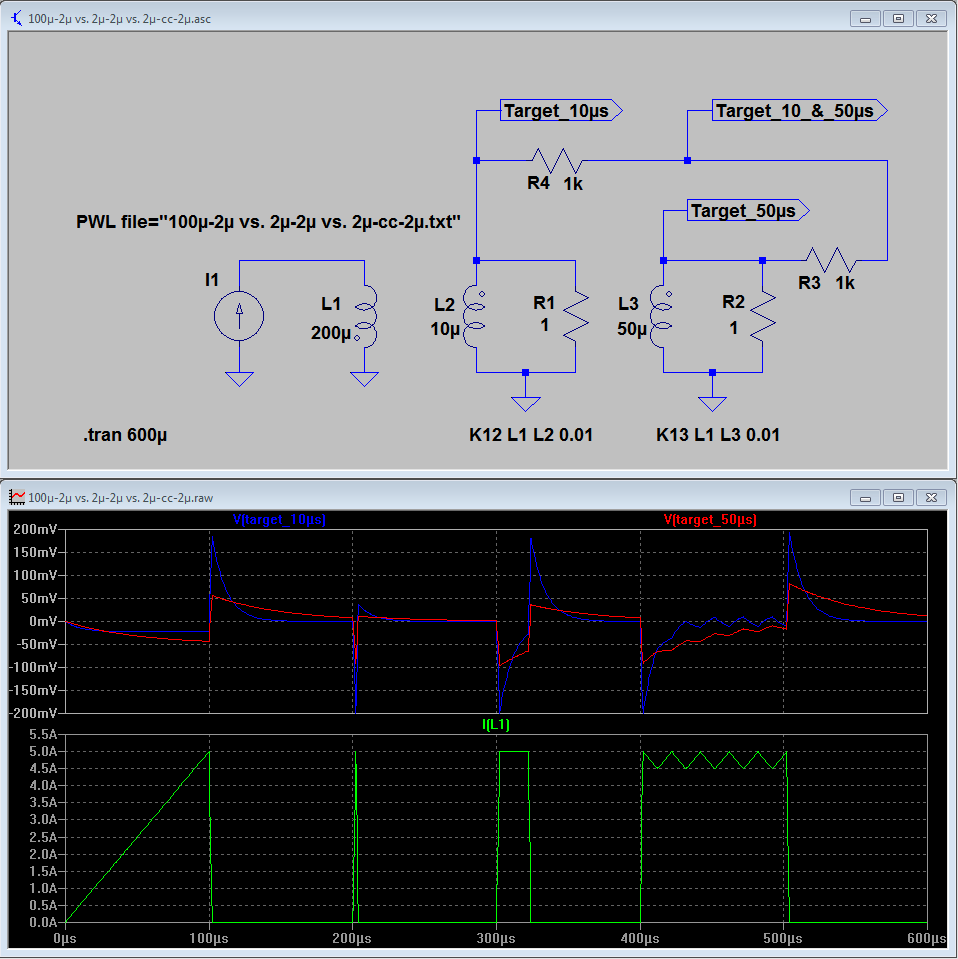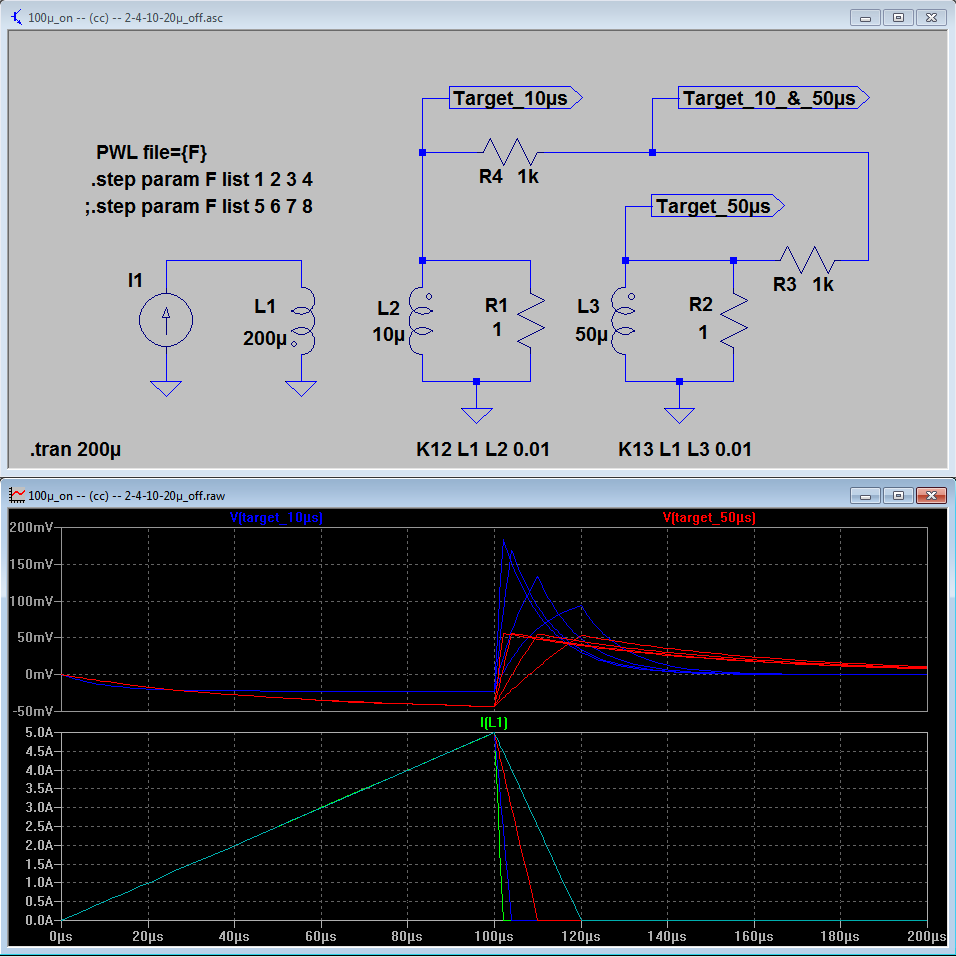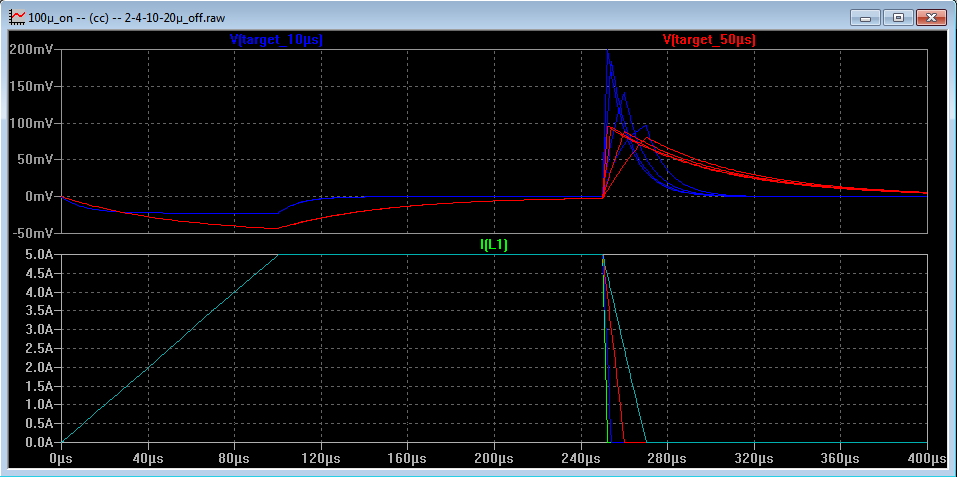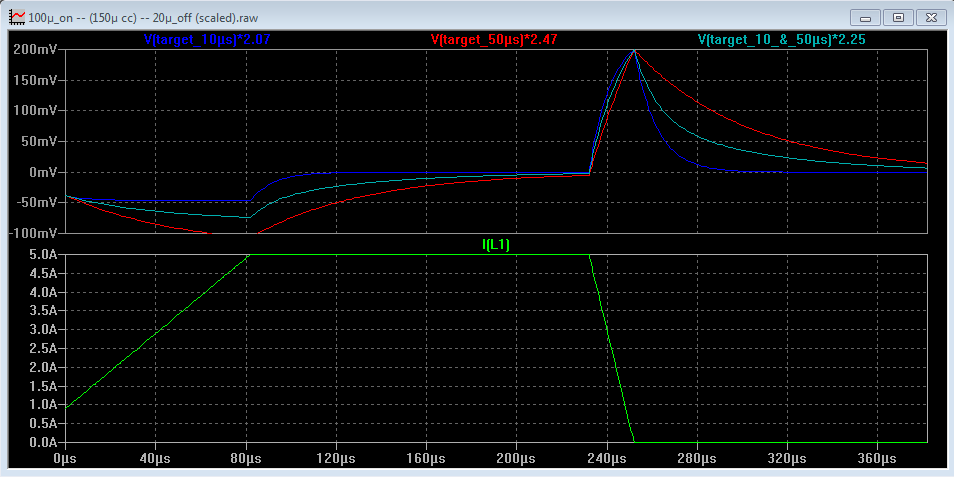Hi guys,
sorry for missing heaps of infos. But it was intended to show you the rough netto response comprison. Anyway. Here is more info:
PPS = 3000, L=600µH, Lr=0.2 Ohm, target TC 1 ms very weak coupled (k=0.001)
Sampling on a PI begins at 50 mV at the decay voltage of the reference PI configuration. The reference PI configuration is an independent and exact copy of the PI configuration and there isn't any target coupled to it. The difference of the PI and reference PI is taken into account for the comparison. No pulse on response taken into account on a PI. And no amplifier present on all configurations. Same coils and targets presented to all configurations.
The crucial point is, that other configurations can make use of the pulse-on response too. That's the reason, why the PI configuration response goes towards to zilch compared to the other configurations.
If you make a spice comparison of all configurations, you can see the huge difference in response.
I've finished with PI's. *LOL*
Cheers,
Aziz
sorry for missing heaps of infos. But it was intended to show you the rough netto response comprison. Anyway. Here is more info:
PPS = 3000, L=600µH, Lr=0.2 Ohm, target TC 1 ms very weak coupled (k=0.001)
Sampling on a PI begins at 50 mV at the decay voltage of the reference PI configuration. The reference PI configuration is an independent and exact copy of the PI configuration and there isn't any target coupled to it. The difference of the PI and reference PI is taken into account for the comparison. No pulse on response taken into account on a PI. And no amplifier present on all configurations. Same coils and targets presented to all configurations.
The crucial point is, that other configurations can make use of the pulse-on response too. That's the reason, why the PI configuration response goes towards to zilch compared to the other configurations.
If you make a spice comparison of all configurations, you can see the huge difference in response.
I've finished with PI's. *LOL*
Cheers,
Aziz









Comment